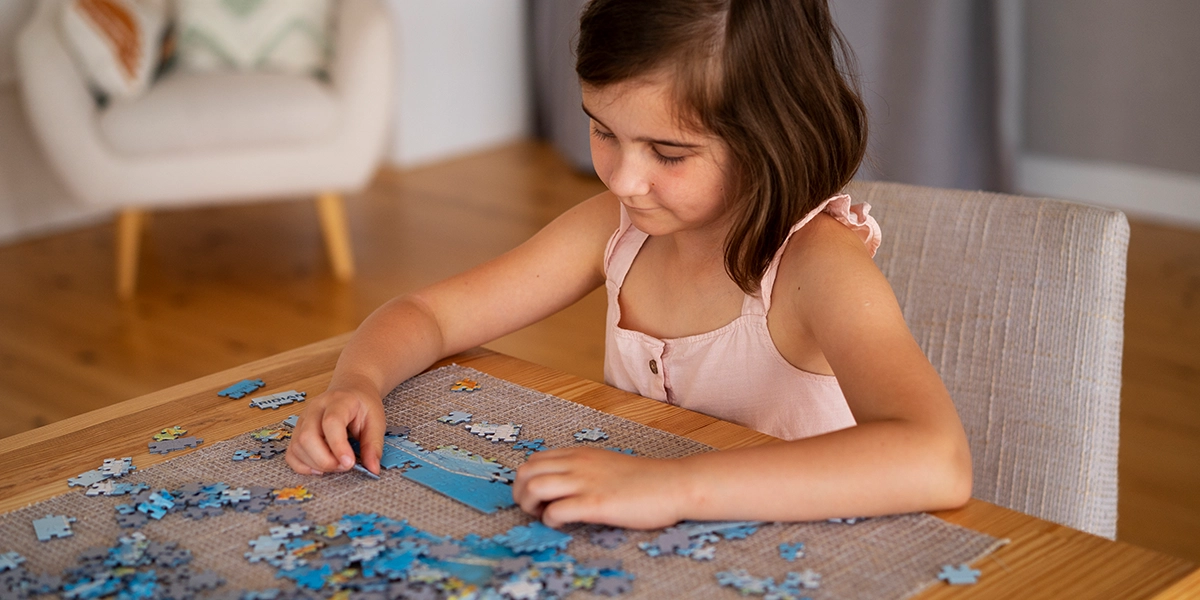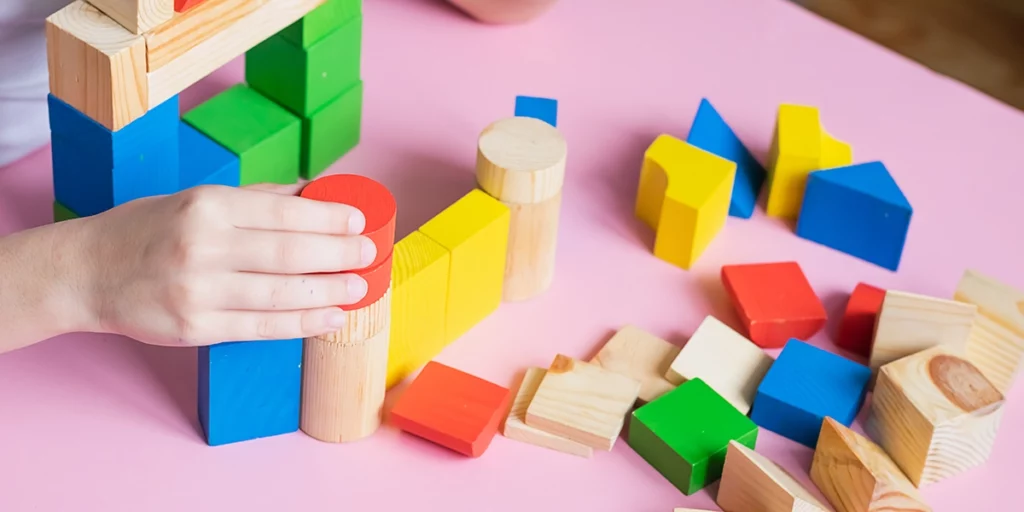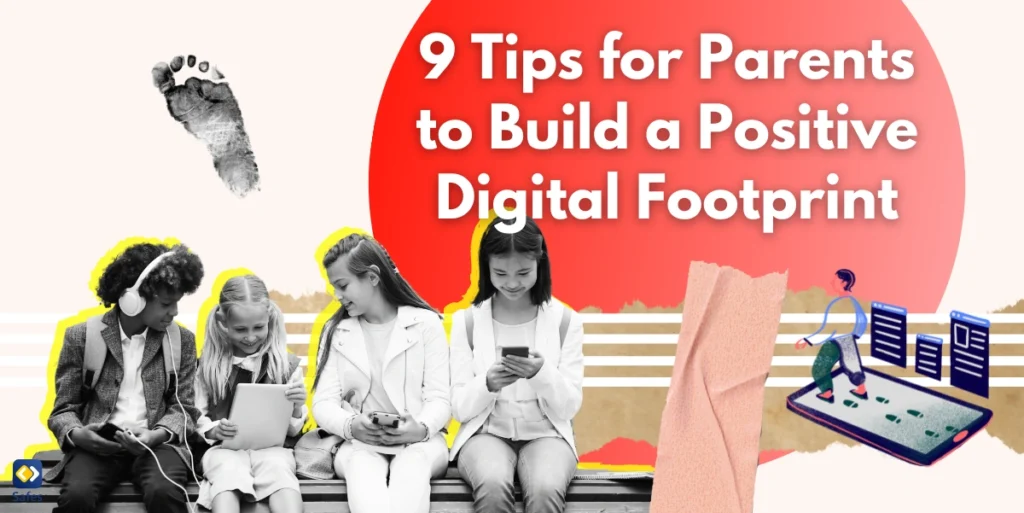Spatial intelligence is understanding and visualizing the spatial relationships between objects. This is an important skill for children to develop as it helps them in a variety of areas, such as problem-solving, math, and science. As parents, we can help foster our children’s spatial intelligence by providing them with opportunities to engage in activities that promote this skill. In this blog post, we’ll explore some visual-spatial intelligence examples that benefit your child and provide you with ideas on how to incorporate them into your child’s daily routine. Whether it’s through playing with blocks or creating art projects, there are plenty of fun and engaging ways to help your child develop their spatial intelligence.
Download and Start Your Free Trial of the Safes Parental Control App
Definition of Spatial Ability
Let’s start with the definition of spatial ability. Spatial intelligence is the ability to understand visual concepts through a spatial processing mechanism. Spatially intelligent people tend to better understand pictures rather than words. It’s like they have a spatial language that works just as well as a spoken one for them. This type of intelligence works in two ways: A person gifted with this ability can easily imagine abstract structures and turn them into concrete objects. Also, when such a person is presented with visual images and data, they can easily understand and use them theoretically.
Examples of Spatial Intelligence in Everyday Life
Visual-spatial intelligence plays a vital role in our daily lives, from navigating a new city to assembling furniture. Let’s take a look at some real visual-spatial intelligence examples.
When we read a map, we need to be able to visualize the different routes and distances between locations. Parking a car requires spatial awareness, as we need to judge the distance between our car and other parked cars. Assembling furniture requires the ability to visualize how different pieces fit together to create a finished product. Even playing video games requires a certain level of spatial savvy. As we navigate through the game, we need to learn the location of various objects and quests to complete the game.
Having solid visual-spatial intelligence skills can lead to increased problem-solving ability and better spatial awareness, making daily tasks easier and more efficient. By helping kids engage in activities that promote spatial intelligence, such as playing with building blocks or solving puzzles, we can help them develop this critical skill. Using visual images plays a key role in helping children better grasp spatial concepts.
Spatial Intelligence in Art and Design
Spatial intelligence is closely linked to creativity and innovation in various forms of art and design. In architecture, spatial intelligence is used to create blueprints and designs for buildings, ensuring that they are functional, aesthetically pleasing, and structurally sound. Fashion designers use spatial intelligence to visualize how different fabrics and materials will drape and fit together to create a finished garment. Graphic designers use spatial intelligence to create visually appealing designs that effectively communicate a message.

Signs of high spatial intelligence in art and design include the ability to visualize complex concepts and ideas, an eye for detail and proportion, and the ability to think creatively to solve design problems. This skill also helps people undertake spatial tasks easily. Strong spatial intelligence skills can lead to success in the visual arts and design fields mentioned here, allowing designers to create innovative and unique works that stand out from the crowd.
Spatial Intelligence in STEM Fields
Spatial intelligence is critical in various STEM (science, technology, engineering, and mathematics) fields, including engineering, computer science, and physics. In engineering, spatial intelligence is used to create and visualize designs for machines, buildings, and other structures. While in computer science, spatial intelligence is used in 3D modeling and game development. Also, spatial intelligence is used in physics to help understand complex concepts such as quantum mechanics and relativity.
Solid spatial intelligence skills can lead to success in these fields since they allow individuals to think critically and solve problems innovatively. Spatially intelligent individuals can easily visualize complex concepts and create visual models to help them understand and explain these concepts to others. They can also think creatively to come up with unique solutions to problems.
Spatial Intelligence in Sports and Physical Activities
Spatial intelligence is an essential skill in sports and physical activities, as it helps athletes understand and navigate their environment better. In soccer, for example, players need to be able to visualize the positions of their teammates and opponents on the field to make strategic passes and tackles. In dance and gymnastics, spatial intelligence is essential for understanding movement and positioning the body in space.
Strong spatial intelligence skills can lead to success in these activities by improving body awareness and coordination. The signs of high spatial intelligence in athletes include anticipating movements and reacting quickly to changes in their environment, giving them an advantage over their competitors. By engaging in activities that promote spatial intelligence, such as practicing footwork drills or taking dance classes, children can improve their spatial awareness and become more successful in their sports or physical activity.
Spatial Intelligence and Education
Spatial ability (the capacity to understand, reason, and remember the spatial relations among objects or space) plays a crucial role in education, as it’s the foundation for developing many other skills. Spatial intelligence can be incorporated into education through various activities and exercises that help children develop their spatial skills.
Children need to develop strong spatial intelligence skills as they play a vital role in fields such as mathematics, science, engineering, and technology. Examples of spatial intelligence activities and exercises that parents and teachers can use to help visual-spatial learners include playing with jigsaw puzzles and mazes, drawing and sketching, and creating 3D models. Basically, any activity that nurtures vivid imagination can help promote this type of intelligence. They don’t necessarily have to be complex: Even activities as simple as paper folding and making various shapes can be beneficial in giving young children a sense of spatial concepts. Start step by step, beginning with simple tasks before diving into more advanced ones.

How Does Safes Help Children Promote Their Spatial Intelligence?
The Safes parental control app is designed to help parents manage their children’s screen time and ensure they’re not exposed to inappropriate content. The app can limit screen time, block specific apps, and filter web content. By reducing the time children spend on digital devices, they’re more likely to engage in other activities that promote spatial intelligence, such as playing board games.
In addition to limiting screen time, the Safes app can also provide parents with reports on their children’s app and web usage. By understanding how their children are spending their time online, parents can identify areas where they may need to intervene to promote more productive activities.
If you want to give Safes a try to save your kid’s valuable time, feel free to download it on your Android or iOS device.
Conclusion
To sum up, spatial intelligence is a crucial skill that has a significant impact on a child’s success in various fields, including problem-solving, math, science, art, design, sports, and education. As parents, we can help foster our children’s spatial intelligence by providing them with opportunities to engage in activities that promote this skill. From playing with blocks to creating art projects, there are plenty of fun and engaging ways to help your child develop their spatial intelligence. We just need to encourage them to take on the mental rotations required to become spatially intelligent people. By developing this skill, children can improve their problem-solving ability and spatial awareness, making daily tasks easier and more efficient.
Your Child’s Online Safety Starts Here
Every parent today needs a solution to manage screen time and keep their child safe online.
Without the right tools, digital risks and excessive screen time can impact children's well-being. Safes helps parents set healthy boundaries, monitor activity, and protect kids from online dangers—all with an easy-to-use app.
Take control of your child’s digital world. Learn more about Safes or download the app to start your free trial today!




